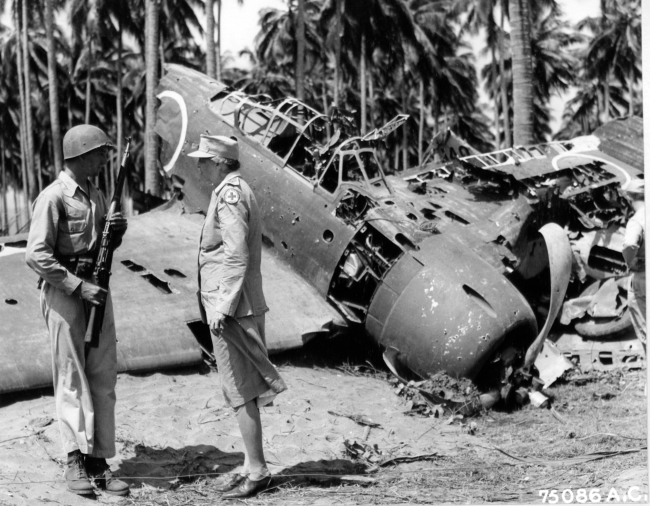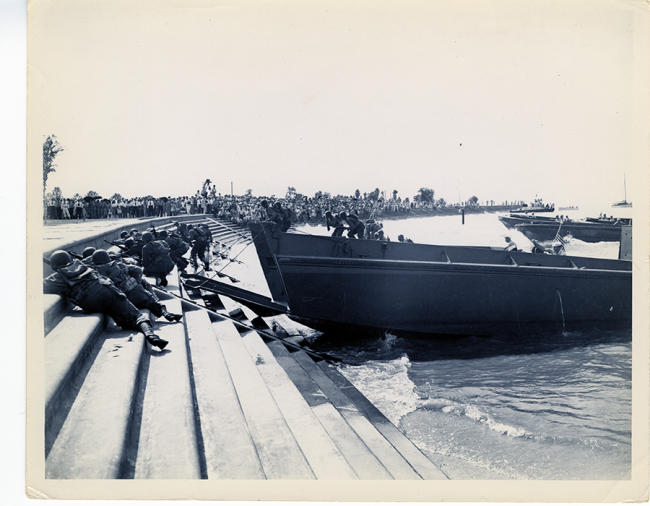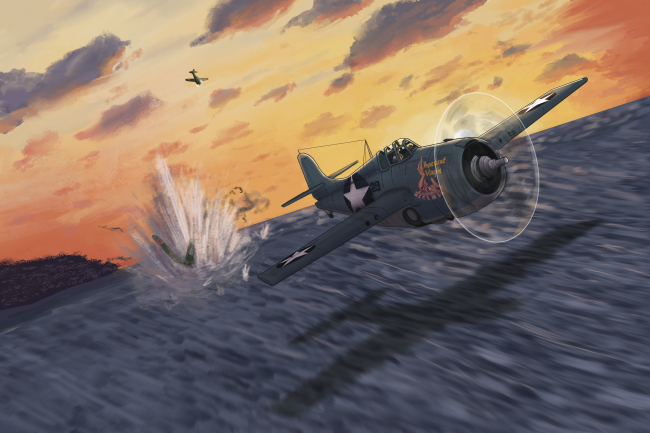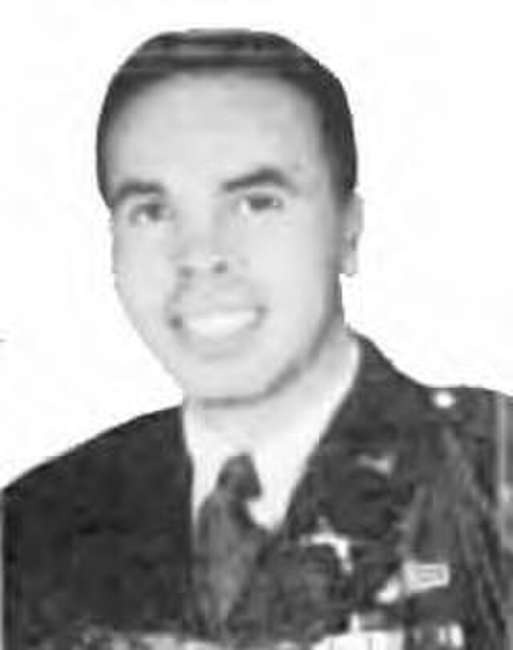D-Day and the Normandy Campaign
On June 6, 1944, the Allies launched the long-anticipated invasion of Normandy, France. Soldiers from the United States, United Kingdom, Canada, and other Allied nations faced Hitler's formidable Atlantic Wall as they landed on the beaches of Normandy.
European Theater of Operations
More from Topic-
Article Type
Allied Tactical Airpower in the Summer, Fall of 1944
From the hedgerows of Normandy across the rivers of northern France and into the dense forests of the Hürtgen and the Ardennes, Royal Air Force (RAF) and US Army Air Forces (USAAF) aircraft cleared the way for the advance of the Allied ground armies.
-
Article Type
Appeasement and 'Peace for Our Time'
Concessions in diplomatic negotiations were nothing new, but after Munich, appeasement took on a new meaning.
-
Article Type
The Axis Powers of World War II
World War II was a global conflict involving nearly every country in the world. But who was on each side—and why?
-
Article Type
Operation Dragoon: Invasion of Southern France
Originally designated Operation Anvil and intended to support the hammer blow of the Normandy landings two months earlier, the renamed Operation Dragoon fulfilled an American desire for a lodgment in southern France that shifted forces from the strategic cul-de-sac of Italy.
-
Article Type
James Allen Ward: The Pilot Who Risked It All to Save His Crew
A young New Zealander airman receives a Victoria Cross for his daring feats.
-
Article Type
Frank Kameny: WWII Veteran, Patriot, and LGBTQ+ Activist
Frank Kameny saw combat in Europe during the war, only to return home to face discrimination from the very country he served.
-
Article Type
Jewish Resistance in Amsterdam
Though they resisted in many ways, Amsterdam’s Jewish population suffered immensely in World War II.
-
Article Type
Garland Kerlec’s Fuse Pin Diary
Technical Sergeant Garland Kerlec used the bomb fuse tags to make a sort of diary of his combat flights, recording the date, target, as well as some commentary on the nature of the mission.
Pacific Theater of Operations
More from Topic-
Article Type
The Battle of Leyte Gulf
In October 1944, the largest naval battle ever fought raged in the Pacific. The Battle of Leyte Gulf ended in American victory—but the outcome could have been very different.
-
Article Type
MacArthur Returns to the Philippines
General Douglas MacArthur vowed to return to the Philippines in 1942—and more than two years later, he delivered on his promise.
-
Article Type
Wreck of 'Ghost Ship of the Pacific' Found off California Coast
The USS Stewart, a Clemson-class destroyer, earned the nickname after having the unique distinction of serving under both the American and Imperial Japanese navies during World War II.
-
Article Type
Oscar Perdomo: The Last Undisputed ‘Ace in a Day’
While becoming an "ace" pilot requires a number of finely honed skills and exceptional aeronautical ability, it is even harder to achieve this status in only one day.
-
Article Type
Typhoon Cobra: Halsey Versus Mother Nature
With Japan on the strategic defensive and her combat power waning, another fleet moving against the island nation also felt the wrath of Mother Nature.
-
Article Type
Marine Killed on Guadalcanal Laid to Rest in New Orleans
The remains of Private Randolph Ray Edwards were identified and accounted for more than 80 years after his death.
-
Article Type
Eleanor Roosevelt's My Day Column from Guadalcanal
In her September 16, 1943, My Day column, Eleanor Roosevelt reflects on her visit to Guadalcanal, where she witnessed the lasting impact of the sacrifices made by US soldiers.
-
Article Type
Liberation of Morotai: A Bloodless Peleliu
While Peleliu remains a fixture of Pacific war memory, Morotai is overlooked and virtually forgotten in histories of the Pacific theater.
Explore By Topics
View More-
 Learn More
Learn MoreEuropean Theater of Operations
-
 Learn More
Learn MorePacific Theater of Operations
-
 Learn More
Learn MoreHome Front
-
 Learn More
Learn MoreMore Topics
Home Front
More from Topic-
Article Type
PT-305: A New Orleans Hometown Hero
As 1943 turned to 1944, PT-305 departed New Orleans, and she would not be back for more than six decades.
-
Article Type
The Allies of World War II
World War II was a global conflict involving nearly every country in the world. But who was on each side—and why?
-
Article Type
The Neutrality Acts of the 1930s
This legislation was the culmination of efforts by American citizens, activists, and politicians across the political spectrum to insulate the United States from foreign conflicts and prevent the country from being drawn into another global war.
-
Article Type
The 'Lost Olympics' of 1940 and 1944
The International Olympic Committee's (IOC) plans for the 1940 Summer Games took many unexpected turns as the world drifted toward global war.
-
Article Type
When Higgins Boats Invaded New Orleans' Lakefront
On July 23, 1944, a celebration marked a milestone in production for Higgins Industries, which had just finished its 10,000th boat for delivery to the US Navy.
-
Article Type
Lend-Lease to the Eastern Front
Despite being overlooked in many circles, American “Lend-Lease” support sent to the USSR not only tipped the scales in Eastern Europe but enabled the victory on the Russian Front.
-
Article Type
Navy Exonerates 256 Black Sailors Punished after 1944 Port Chicago Explosion
The exoneration was announced on the 80th anniversary of the explosion at the Port Chicago Naval Magazine in California that killed 320 people and injured 400 others.
-
Article Type
July 4, 1941: FDR's Address to the Nation
From Franklin D. Roosevelt’s perspective in the White House, democracy was under attack overseas and at home in mid-1941.
Medal of Honor Recipients of World War II
More from Topic-
Article Type
The Depths of Courage: Howard Gilmore and the USS Growler
Commander Howard Gilmore’s story is certainly one of extraordinary valor, dedication, and sacrifice.
-
Article Type
Jefferson DeBlanc and the Air Battle for Guadalcanal
When Jefferson Joseph DeBlanc entered Guadalcanal, the United States had been fighting a defensive campaign against Japanese attempts to retake Henderson Airfield and dominate the surrounding seas.
-
Article Type
Rudolph B. Davila's Medal of Honor
Second Lieutenant Rudolph B. Davila, of Spanish-Filipino descent, received the Medal of Honor for his heroic actions near Artena, Italy, during World War II.
-
Article Type
Manuel Pérez Jr.’s Medal of Honor
After parachuting on Tagaytay Ridge, Manuel Pérez participated in the horrendous fighting with the Japanese in the Philippines' capital city of Manila, the scene of some of the bloodiest urban combat of the war.
-
Article Type
A 'Gallant Stand' at Monte Battaglia: Manuel V. Mendoza’s Medal of Honor
For what he did on October 4, 1944, Staff Sergeant Manuel V. Mendoza garnered a special place in the history of Nazi Germany’s defeat.
-
Article Type
Johnnie David Hutchins's Medal of Honor
The loss of Johnnie David Hutchins was devastating to his family, but his moment of bravery almost certainly saved other parents and siblings from experiencing that same loss in the fall of 1943.
-
Article Type
John Joseph Parle's Medal of Honor
Navy Ensign John Joseph Parle risked his own life to save a ship and ensure a successful Allied amphibious invasion of Sicily in 1943.
-
Article Type
Robert Craig’s Medal of Honor
For his heroic service as an infantry officer during the Allied invasion of Sicily, Second Lieutenant Robert Craig was posthumously awarded the Medal of Honor on July 11, 1943.


_1944_10_24_1523explosion.jpg)








.jpg)

























